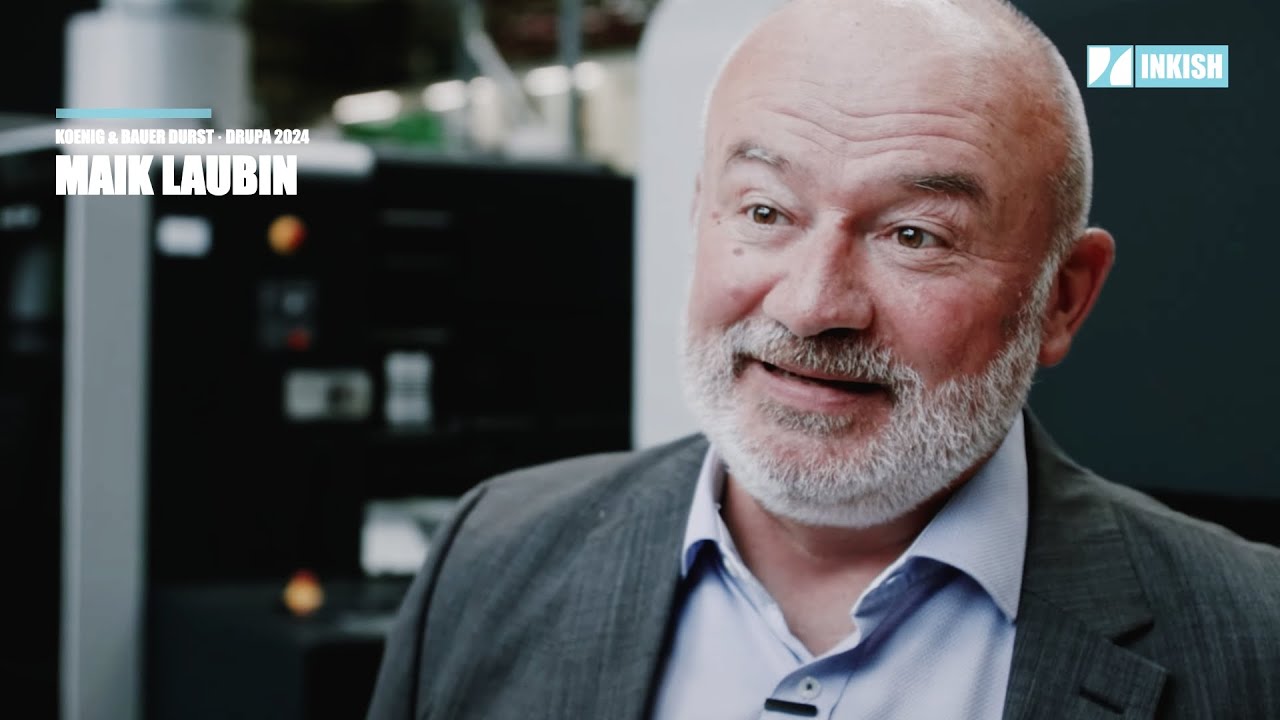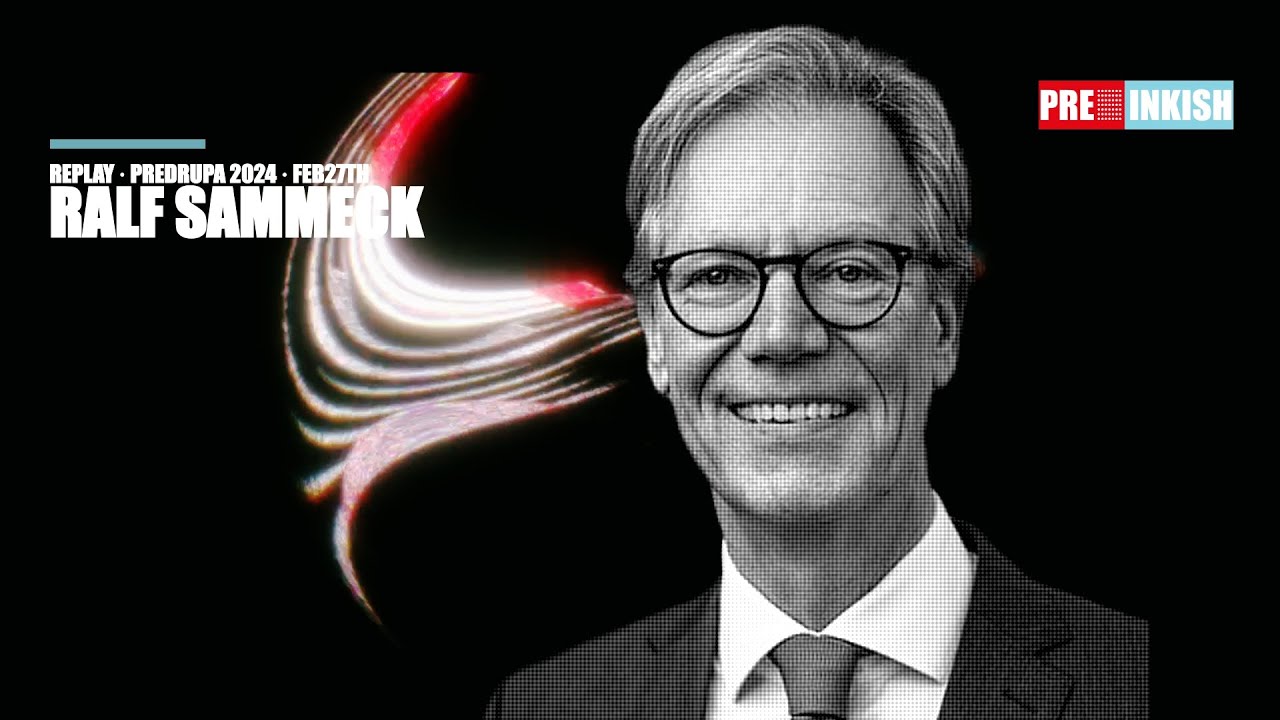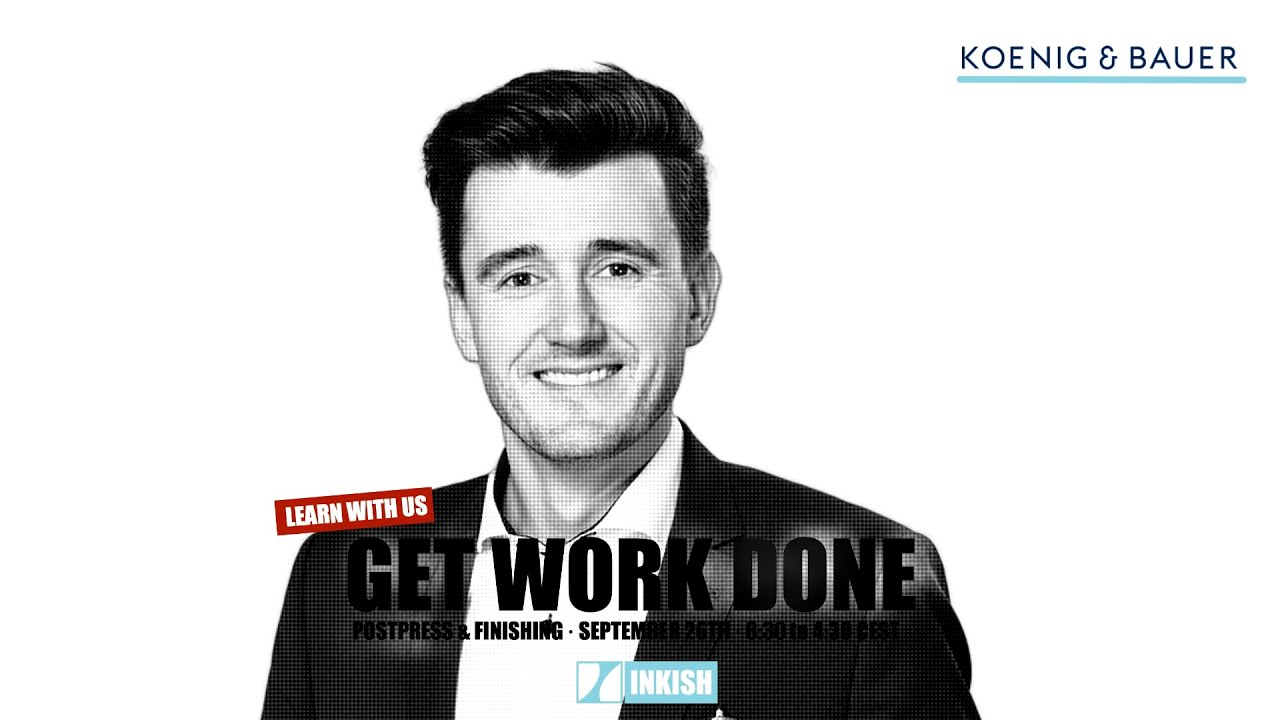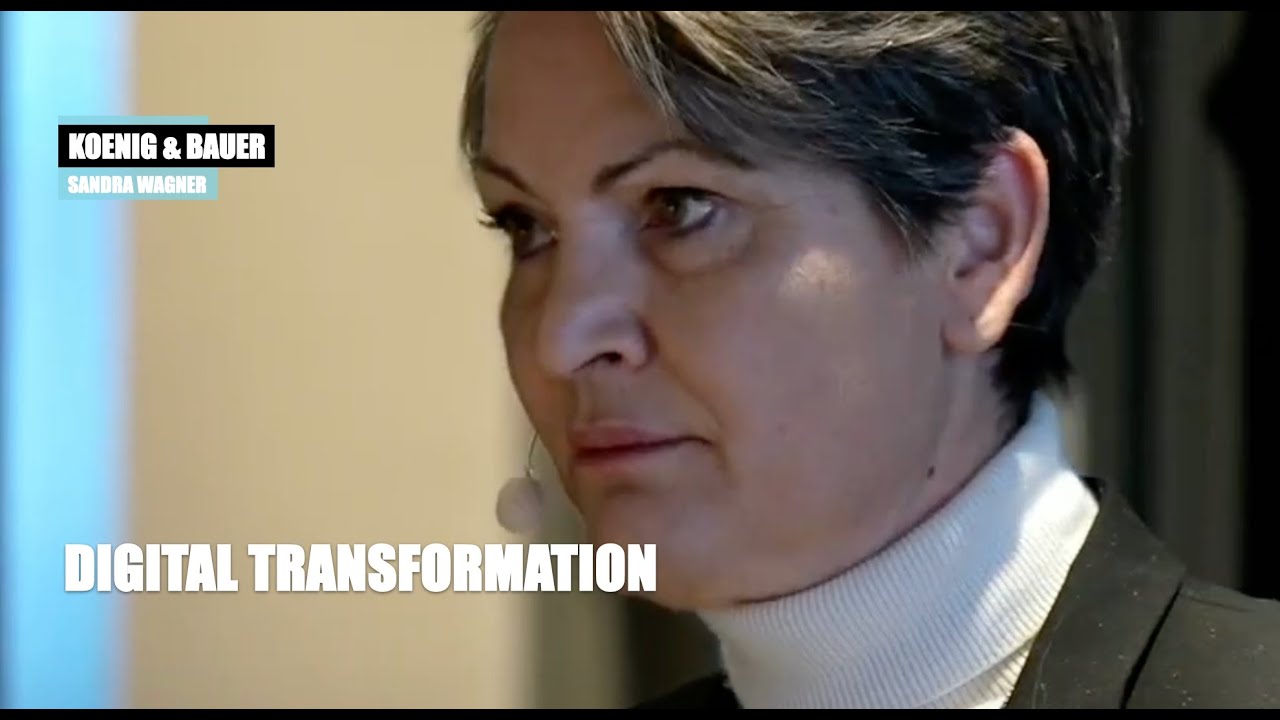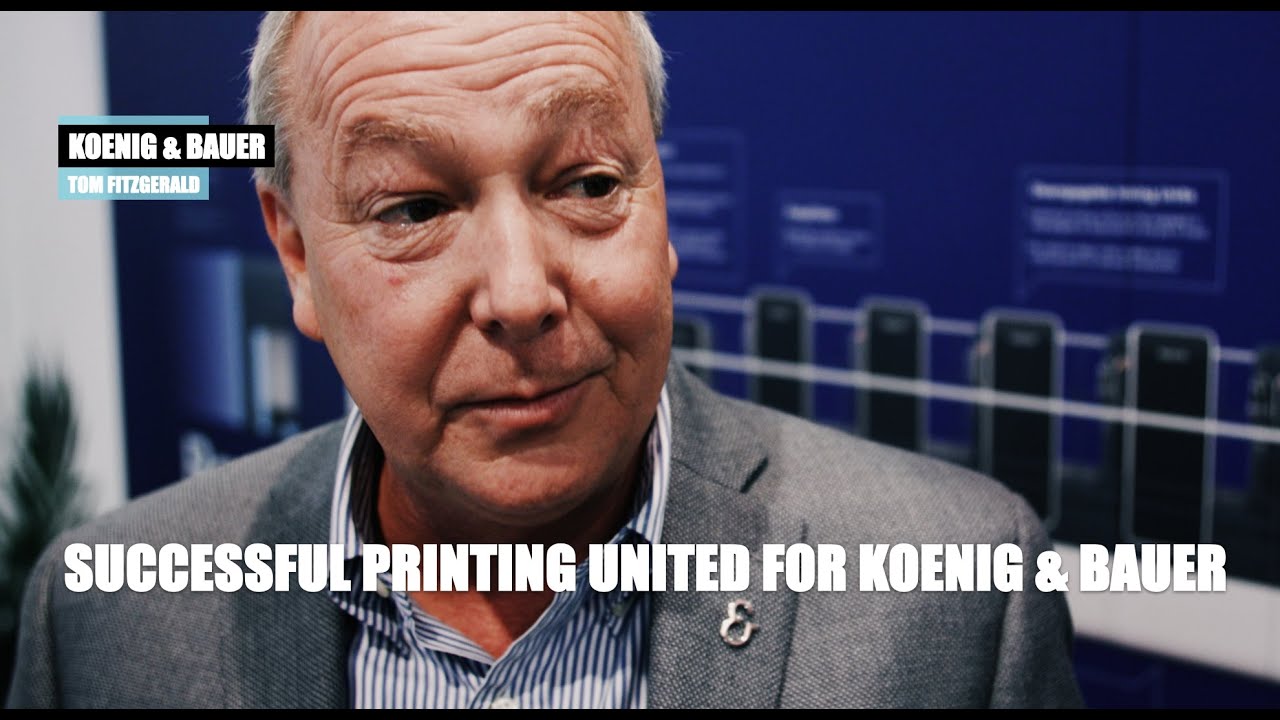Digital Transformation · Thomas Goecke · Koenig & Bauer
Digital Transformation is a commonly used buzzword that many people maybe don’t understand the consequences of. Though the interpretations are widely discussed, nobody questions the importance. There is a tendency that new, young and innovative companies seem to have a ‘patent’ on digital transformation. In this film, we talk to Head Of Digital Business Transformation / Digitalization Thomas Goecke from Koenig & Bauer, responsible for the company’s digital transformation. What does it mean, what is the impact, and will it bring people closer to each other?
I must admit that I am thrilled with this interview, where Thomas Goecke openly shares his thoughts and considerations.
We need to provide the same experience that customers know from their private life. And need to transform that into business life.
What does IoT mean for you?
IoT, it’s a I think it’s a kind of technical word for a lot of people. But I believe IoT is the basis of or needs to be the basis of success for many, many industrial manufacturing companies. IoT enables us to connect to our industrial assets, our presses at a customer site. And that helps us to understand what’s going on at a customer site in a way, way, way, better way. And that helps in addition us to follow our approach to deliver proactive services, to be the trusted advisor of our customers. And provide additional service around our core product, the presses and the postpress equipment we are selling successfully to our customers. So IoT and the resulting data out of it enables us to create new business models. New service offerings towards our customers. Helping us to be more successful. And even more important, helping our customers to be more successful, to be profitable. And maybe even differentiate themselves from their competition.
Benefits of big Data?
Big Data is the source, I would say, of of everything we are doing. Of course, you can do analysis and service. Or you can fulfill service tasks or service calls based on single data out of one press. But if we talk about, let’s say, a topic like industrial analytics or predictive maintenance, you need to have Big Data. Because what’s happening on us on a single press might be not valid on a global scale. So having Big Data helps you to understand way, way better what’s going on for certain models, for certain press formats, for certain applications. Or even helps you to understand what’s going on in the market. So since we have all the data from the market, we do see shifts in the market. We do see what regions are developing into what direction. We do see applications, shifts in applications and so on. And that helps us as well to align. Or to focus our company on what’s most important for the market as well for customers.
When everything is cloud based. How important is security?
Security is a topic we are focused on. But provided through our platform where we have built all our services on. So since we didn’t custom built the applications that we picked very wisely more than 10 years ago, a professional and the leading platform for applications. In our case it is Salesforce. And Salesforce, again, it’s not a CRM system anymore. Very early we figured out that Salesforce will be our platform of success. Our platform of innovation. And based on that single platform, we can besides all the classical CRM applications, we can build additional services towards our customers. So security is part of that platform. Trust is one of the core values of the provider of this platform. So of course, we have to think wisely how we design applications. And we have to make sure that certain data is accessible only to certain people. But the core of it is delivered by the platform. And that’s actually the beauty of cloud, of real cloud platforms. That you as a business can focus on. The business value is generating out of the platform. You don’t have to deal about scalability. You don’t have to deal about security, about connectivity. That’s delivered by the cloud application. So it’s a huge benefit. And I strongly believe without cloud applications. Or without using cloud applications, you can’t be successful in today’s times.
Digitalisation Evangelist?
Being a digitalization evangelist, that means, first of all, for me, sharing my passion for the technology and for the new ways of making business with customers. About putting the customer center of our universe. Sharing that within our universe, within our Koenig & Bauer universe first of all. But as well towards our customers. And I think it’s very important that we all share this passion. Internally as well as to customers. And that’s why, for instance, in 2018, in 2019, we had open houses. Just focus on digitalization. And these events, we aren’t just showing technology, but what we really try to do is inspiring people, sharing our passion and getting emotions across to our customers to understand what we are really kind of shooting for our roadmap, the service we are delivering, and that really customers are open. And opening up their minds towards new technology, new ways of doing business. Towards new business models and so on. So and that’s why I see my role as its technology, but its technology is not the hard part anymore. I think it’s just available, you know.
Was the transformation driven because of efficiency or was it our new habits?
I believe it’s a combination. Digitalization and digital business transformation is not about effectivity only. And especially not effective internally, that’s the wrong approach. But it’s about providing a new customer experience, first of all. And the customer experience that is driven by, as you mentioned, the Facebooks and whatever of the world. And the user experience, these kind of platforms, Google, Apple, with the iTunes universe. With the user customer experience these kind of platforms provide to everybody pretty much in their private life. But that changes as well, the kinds of expectations customers are now having for the business relationships they are into. Our understanding and our digital mindset is towards: we need to provide the same experience customers know from their private life. And need to transform that into business life. Things need to be as easy to understand as possible. If you talk about user interface of applications. In no way it should be menus, menus over menus and sublevel menus. It has to be operatable without long manuals. People have to look into the application, into a solution and: Oh I understand how that works. It has to be kind of self explaining. And that’s part of that story. Sometimes it’s hard, especially for engineering driven companies. But that’s part of the passion I’m trying to bring into the company. That we have to change the mindset. And we have to think differently. And that you have to make things easy. Easy to digest. And that’s where we fulfill probably in a way better way customer expectations. Which again are driven by the experience everybody of us is experience in the private life. So applications we all know from our private life. They really drive what we are doing in business.
Has the customer relationship changed during the digitalisation phase?
Absolutely. And it has changed already. So every customer is on a kind of customer journey. So as we talked about the digital business transformation, for us, it’s a journey. It had probably a starting point. But is there an end point? I am really not sure about this. And the same for customers. The first contact point with a brand of Koenig & Bauer…We have at the first step is in the customer journey. But then it develops further. And customers do expect that we provide them with information. With useful and helpful information along the customer journey. And of course, it needs to be a kind of one of one communication we are setting up and providing information to. So, the kind of information we are providing for what a customer needs to be different… Let’s say, in the face of when the customer does evaluation of the equipment available on the market. And who does the buying decision. To what or compared to, when the press is up and running or maybe after warranty. So the information customers are expecting is really kind of tailor made to each specific customer’s point within this customer journey.
Has that influenced Koenig & Bauer?
Heavily, heavily. When we did our brand relaunch back in 2017, it wasn’t just a brand relaunch. We really did some intense research on our customers. How we are seen in the market. We did some intense research with the trade press. With other people from the industry. How is Koenig & Bauer seen? Where’s the market going? Where do we see room for improvement for Koenig & Bauer? For Koenig & Bauer Sheetfed?
And that influenced the kind of design of the brand. The design of the presses. With a brand new user interface or operational concept. And as well influence, of course, the hardware products and as well the software products we are delivering.
Are printing companies good at educating their customers about the value of print?
I do see that our customers probably need to educate more towards their customer what’s possible. And maybe that’s something we need to be focused on as well, more in the future. The applications.. Let’s say, agencies, have no clue about. Is it in packaging? Or is it in the commercial market? Agencies tend to or brands tend to do, let’s say, let’s be a bit provocative as well, tend to do things they’ve always done in the past. But they have no understanding and no clue what’s possible today. If you think about the beautiful finishing applications, possibilities, agencies or brands can do with our presses, especially with special configurations. I think that would open up totally new markets for the customer. But as well for the brand in order to differentiate. And here we are again to differentiate themselves from their competition. Because what’s important is… Let’s take the advantage of going into a grocery store. If you go there and see multiple boxes of cosmetics. What’s the differentiation for the brand? It’s only the folding carton, right? So brands try to be different. Brands try to come up with innovative solutions for the first touchpoint with the brand in the shelves. Customer journey again, hm? First touchpoint. And as long as they have a good understanding what’s going on in the market, what technology is available, what finishing applications are available. They can start thinking out of the box and come up with own and new creative ways of strengthening a brand. Or position a brand within all the other brands. So there’s definitely room for improvement for the market, for our customers. I think the opportunities are really endless. Especially with the busy technologies. Or the speed of technologies developing.

































































